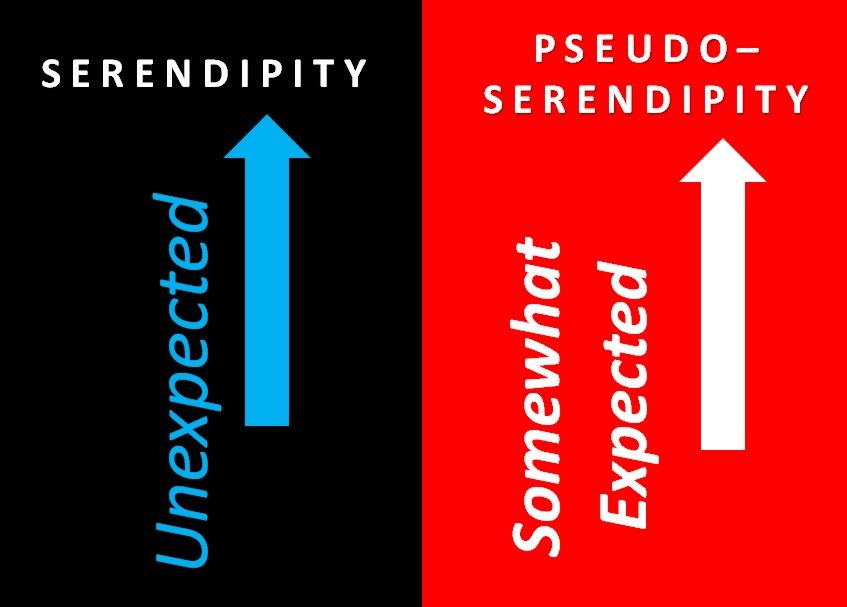The Lifeboat Foundation Worldwide Ambassador Mr. Andres Agostini’s own White Swan Practical Leadership Success Tenets, Countermeassuring Every Unthinkable Black Swan, a t https://lifeboat.com/blog/2014/04/white-swan
Practical Leadership Success Tenets by Mr. Andres Agostini:
# 1 — This Leader archetype is An Actionable Statesman.
# 2 — This Leader archetype is thoroughly moral and ethical in deed and spontaneously projected example.
# 3 — This Leader archetype is happily located and navigating through Century 21.
# 4 — This Leader archetype is, by far, focused on solid and increasing education and perpetual mind expansion, chiefly those acquired by solving truly complex problems systematically.
# 5 — This Leader archetype is Self-Pedagogue forever. This Leader archetype teaches to self-tech to his / her crew for Life.
# 6 — This Leader archetype Leads, Co-Leads, Follows, Co-Follows, Plans, Co-Plans, Invents, Re-Invents, Co-Invents, Co-Reinvents, Executes, Co-Executes, Builds, Co-Builds, Envisions, Co-Envisions, Paves and Co-Paves Never-Thought-Of Pathways.
# 7 — This Leader archetype is Intuitive, Counterintuitive, and seamlessly blends both of the above without paralyzing in the analysis.
# 8 — This Leader archetype Takes all — encompassing curiosity as it is operated in real time — beyond known and unknown extremes.
# 9 — This Leader archetype makes every mistake — own or that of the competitor — at the expense of adversaries into his / her won victory.
# 10 — This Leader archetype doesn’t care how fluid and amorphous the limits, contexts and the dynamics of his / her blurred theater of operations are.
# 11 — This Leader archetype can strategize and prevail through many operational frameworks at once without getting bewildered.
# 12 — This Leader archetype challenges every assumption, doctrine and dogma ruthlessly and relentlessly, beginning with his / her own ones.
# 13 — This Leader archetype Learns something practical, meaningful, and decisively productive and significant every day.
# 14 — This Leader archetype Heightens crew’s sense of urgency and of focus.
# 15 — Re-adapts and re-invents resiliently and effortlessly regardless of whatever constraints and increasing pressures stemming from the frame of reference.
# 16 — This Leader archetype operates multidimensionally and cross-functionally.
# 17 — This Leader archetype constantly and boldly sets pre-conditions to maximize the likelihood of his / her triumphs.
# 18 — This Leader archetype always selects and develops his / her leadership constituency.
# 19 — This Leader archetype creates and applies his / her own — along with that of the team — body of knowledge.
# 20 — This Leader archetype does never ever institute “best practices,” but UNIQUE, premium-graded approaches.
# 21 — This Leader archetype carries on much swifter that “life cycles” intrinsic to products, services, challenges, and complex problem solving.
# 22 — This Leader archetype does not get concerned about his / her adversaries since the uniqueness and ever-upgrading quality of tactics, strategies and stratagems as applied.
# 23 — This Leader archetype harmonizes issues immediately. Yes, he fights against adversities and their proponents. But, at the end, This Leader archetype is a peace maker.
# 24 — This Leader archetype’s leadership is always (and robustly so) linked to concrete and unambiguous objective and goals.
# 25 — This Leader archetype Always updates his methods, approaches, techniques, tactics, strategies, especially using those that are extraneous to so-called and already disrupted (published or unpublished) “history.” (Which one, that wrote by winners or that stated by losers or that always failing to have sufficient objectivity?)
# 26 — This Leader archetype continuously learns lessons — and improves those — both from incurred mistakes and from captured successes.
# 27 — This Leader archetype extracts information and knowledge — to be shared and brainstormed with the crew in advance — out of everything done, thought, as well as to be executed regardless of the incumbent.
# 28 — This Leader archetype wins only based on merit, principle, legitimacy and lawfulness.
# 29 — This Leader archetype strategizes the granularity of detail of everything. There is no such a thing as a leader that is not a strategist and a consummated visionary. Fringe, “terra incognita” and fuzzy-logic zones are highly stimulating to his / her starving intellect.
# 30 — This Leader archetype embraces leading-edge (even weird) science and its stemming technological derivatives immediately.
# 31 — This Leader archetype enjoys phenomena and prevails as he / she navigates through said phenomena.
# 32 — This Leader archetype is never commonsensical and always pervasively challenging long-held assumptions as he / she institutes the most unorthodox and exuberant novel practices (lavishly so).
# 33 — De-tools, tools, re-tools the amplification of the individual and collective intelligence within his / her crew.
# 34 — This Leader archetype instills how to operate autonomously and jointly — in pursuit of the same goals and objectives — to his / her followers and co-leaders.
# 35 — This Leader archetype learns from his / her mistakes, but empathizes to learn also from the mistakes of others.
# 36 — This Leader archetype fluidly shares experience and practical knowledge across every incumbent in the crew.
# 37 — This Leader archetype only thinks and performs à la unthinkable thinking.
# 38 — This Leader archetype disrupts the boundaries of unthinkable thinking, always going progressively more beyond such boundaries.
# 39 — This Leader archetype transforms new problems and old problems into actionable breakthrough opportunities.
# 40 — In his / her case and exercising this type of leadership, this Leader archetype strongly and coherently insists on and applies three aspects: CIVILITY, CIVILITY, CIVILITY!
# 41 — Before chaos, he / she instills more and more chaos — of greater magnitude, scale and speed — to level off and outsmart the frame of reference targeted.
# 42 — This Leader archetype drives OPS with directness and / or indirectness, as well as with the loose/control hybridization mode.
# 43 — This Leader archetype shares of defined values as they get collegially upgraded for Life.
# 44 — This Leader archetype elicits conceptions of practiced futures to deal with and countermeasure way in advance.
# 45 — This Leader archetype fuses technology innovation with business strategy as a tool for competitive advantage.
# 46 — This Leader archetype conceives early and distinguishes it and exploits it strategic surprises attributable to competitors.
# 47 — This Leader archetype ascertains that there is not a single stone left unturned.
# 48 — This Leader archetype short-circuits to shortcut.
# 49 — This Leader archetype possesses innate ideas — in addition as those incubated by the crew — positioning himself / herself in the tabula rasa’s antipodes.
# 50 — This Leader archetype is determined to supporting his / her fellow crew members even beyond his own skin.
# 51 — This Leader archetype is more willing to openly share fact-and-figure information regarding their interests, constraints, and priorities as they have earned each other’s trust.
# 52 — This Leader archetype invests in trust building prior to, during, and after their commando operations (regardless of the business enterprise or not theater of operations).
# 53 — This Leader archetype does not simply leverage trust when it is present; he / she builds trust when is absent.
# 54 — This Leader archetype is a poker-faced strategic visionary raising the ante and raising the scale of the latter as he / she modulates the timing and “landing” of the calculated risks waged.
# 55 — This Leader archetype alleviates fears and builds trust.
# 56 — This Leader archetype builds so many “strategic surprises” in his mind lab way in advance — in eternity overriding the most bizarre dreamed-of (and practiced) futures with the foresight and far-sight perspectives — in a way utterly impossible to be caught off guard by so-called in-the-ground reality (that is, nothing more than partially controlled hallucinations).
# 57 — This Leader archetype demolishes all forms of mediocrity, especially lying and manipulating within his amorphous and versatile crew, enabling the rogue ruling of the omni-mode optimum.
# 58 — This Leader archetype communicates pointblank as he / she elicits the content with clarity, respect, cordially and, above of all, an upped sense of urgency. Treasures reasoned fury for competitors, adversaries, and industrial spies, as well as in transmutation of weaknesses into stern strategic advantages over his / her contrarians.
# 59 — While focusing on several specific matters to tackle and their rules of engagement, he / she never loses sites of the contexts targeted by the other member of his crew. This Leader archetype has the clearest mentality that everything is related to everything else.
# 60 — This Leader archetype thinks “big picture” and wholly to operate comprehensively and multifacetedlly to state the very minimum.
# 61— However the primordial leader and the emboldened sprits de corps across the board within his / her crew, he / she unambiguously honors, respects and institutional rewards the highest hierarchies, as well as those under his / her watch.
# 62 — He / she, as well as the entirety of the crew, thinks in already practiced futures to in-source his / her individual and collective mind(s) with zillion actionable options from the originated one to out-strategize adversaries and ascertain indisputable prevailing.
# 63 — This Leader archetype views as scientists reportedly tell us as the horses see in real life, so that this holistic view and systemic and systematic engagement in the theater of operations — tremendously propelled by fore-sighting — offers This Leader archetype a lucid second nature in dealing with globality and the elements of the system (embedded in his blurring and flowingly blurring context) from the amplest perspective of that prepared mind that not only is capturing the uniqueness, the subtleties, and interrelationships of the challenge to be resolve (on the doubles) as they are posed by the theater of operations.
# 64 — When an action is to happen is not that bad and when the minds, spirits, and souls of these leaders and co-leaders are not counting with the greatest and most updated competitive intelligence (and, sometimes, rampant intelligentsia), This Leader archetype, as per the medical maxim, engages into “first do no harm,” thereby awaiting for the soonest and best timing to besiege and conquer (WITH HONOR) the theater of operations.
# 65 — This Leader archetype does not have only a passion, but he / she has an extremely well passion that does not allow said person to lose composure, aim, an strategic blueprint to shock and awe, via overbearing number of angles, the adversary to be turned in defeat by the collective unleashing of energy unload on to them for the ultimate domination.
# 66 — This Leader archetype establishes a great human-to-‘computational power’ intelligence close-loop feedback via artificial intelligence to access to and swiftly operate on the numerical and narrative data received between the terrain sustained gains and the ultimate goal to be captured within maximum control.
# 67 — This Leader archetype secures so many Pyrrhic and ‘ignored flank’ victories to improve his / her abilities — and that of the crew — while bringing about a dramatic but yet subtle and decisive breakthrough, very much to his / her advantage and that of humankind.
# 68 — When the leader approaches any important mission, he / she enters the process with the goal of looking for areas in which strategic value can be created.
# 69 — This Leader archetype helps disputant crew members to reach harmony thoroughly, not dwelling on the past but improving the perspective of his persona and that of the crew toward the immediate future.
# 70 — This Leader archetype fails so recurrently that, that in the final analysis, he / she affluently prevails. This worships his mistakes as sacrosanct learning devices that he, in the treasured futures, wins easily, independently of precarious terrains.
# 71 — This Leader archetype is forever building up — via transparency, accountability and responsibility — trusting among his / her fellow co-leaders. In those critical missions, say of law enforcement, first responders and the military, the maximum on-site responsible one exercises a climate of distention and courtesy among his crew members. There is here a difficult balancing act — that is never a daring issue for the wise leader — is to offer support and friendliness without disrupting the limits between the professional life and personal one. Intimacy exchanges between the crew members of the same team will gravely compromise the integrity of the incumbents and their mission-critical responsibilities. The members incurred in such situation must be immediately relocated.
# 72 — This Leader archetype possesses clarity of thought and great depth and scope in contrarian’s judgment, as he / she avidly ponders above and beyond wholly.
# 73 — He / she grows mentally and intellectually in the midst of complexity, chaos, and anarchy, transforming the cited three factor in the tools to secure his triumph early.
# 74 — This Leader archetype becomes responsible for assuming costs, losses, liabilities, behaviors, as well as outcomes.
# 75 — This Leader archetype does not retaliate; he / she just prevails.
# 76 — This Leader archetype’s mentality is ruled by his / her own should-self facet and never by his / her want / self one. In doing so, This Leader archetype maximizes the long-term benefits.
# 77 — This Leader archetype is always encouraging and supporting legitimate justice seeking.
# 78 — This Leader archetype is much more of an asset than a hindrance in interacting with the members of his / her crew.
# 79 — This Leader archetype is both robust, resilient and carries on non-linearly.
# 80 — This Leader archetype is an over-communicator.
# 81 — This Leader archetype is the hidden persuader to the greatest causes that transforms the World from a tiny bit of an annoying place into a better place, though interesting and educational in extremis.
# 82 — This Leader archetype is more flexible, competent, industrious, diligent, trustworthy, rational, honest, fair, cooperative, and compassionate than his / her opponents.
# 83 — In succeeding, This Leader archetype does not denigrate his / her opponents. He / she treat adversaries with highest decorum.
# 84 — This Leader archetype’s radiant reasoning is analogically instituted.
# 85 — This Leader archetype uses the insider’s lens, but much more emphatically utilizes the outsider’s lens.
# 86 — This Leader archetype makes more with less.
# 87 — This Leader archetype always operates better, when in the “battlefield,” the theater of operations has many sub-systems in and beyond ‘fringe’ status.
# 88 — This Leader archetype is engaged in “real time” calibrating mode, quantitatively and qualitatively, the information, data, and arguments that you hear from them.
# 89 — This Leader archetype cross-checks everything in its entirety.
# 90 — This Leader archetype chooses and updates and upgrades his / her own appropriate measure of success.
# 91 — In his / her pondering and discerning processes, This Leader archetype emphasizes — to the self and crew member fellows — the need to understand the other side’s perspective in advance and in continuum.
# 92 — This Leader archetype discovers the hidden interests, priorities, constraints, patterns, and subtle ploys of the other side, allowing him / her to create strategic value more efficaciously.
# 93 — This Leader archetype finds ways to overcome not only the reasonable objections of others, but also their close-mindedness.
# 94 — This Leader archetype reserves consistency between their attempts and actions.
# 95 — This Leader archetype , in order to protect the self, must make a judicious and salient effort to anticipate and mitigate powerful effects from strategies enforced.
# 96 — In each situation, This Leader archetype provides his / her crew with strategies for seeing and uncovering more clearly the information that falls in your blind spot.
# 97 — This Leader archetype thinks through the decision rulings, constraints, strategies, resource pressures, and politics of the other side.
# 98 — For This Leader archetype , the other side information advantage is never in his / her blind spot.
# 99 — This Leader archetype ’s First Nature is to wholly trustworthy and never wholly trusting.
# 100 — This Leader archetype is afraid neither the future nor the past but make a mark on the moment.
# 101 — This Leader archetype resists the obvious to embrace the newness of ignored flanks.
# 102 — This Leader archetype does not look through the mirror but every window.
# 103 — This Leader archetype build bridges between failures and sustainable successes.
# 104 — This Leader archetype’s greatest action is to pause to engender cross-pollinated perspectives from pondering, discernment, and actionable reflections.
# 105 — The only stasis This Leader archetype knows is the order tendered by chaotic measures that institute and restore harmony.
# 106 — This Leader archetype is the host of his / her co-leaders (Hostmanship).
# 107 — This Leader archetype generates a lot of ideas and plans; looks for good ideas, not just his / her own but those of the crew.
# 108 — This Leader archetype never abandons the power of saying what he / she believes and believing and executing what he / she says.
# 109 — This Leader archetype operates based on that a good working relationship will work even better when all work on it together (esprit de corps).
# 110 — This Leader archetype knows, that in engaging in a major initiative, the first moments are apt to be the most lively and decisive.
# 111 — While co-leaders are occupied with training, This Leader archetype must set the tone for all of his / her consistency.
# 112 — This Leader archetype takes care of his / her co-leader and looks after him / her in detail.
# 113 — This Leader archetype listens to his / her co-leaders’ complaints, inspects their tools and equipment, and satisfies himself / herself that co-leaders do not lack anything.
# 114 — This Leader archetype demonstrates that takes his / her responsibilities seriously and devotes himself / herself completely to the co-leader, which in turn inspires the co-leader’s confidence.
# 115 — Before committing to any serious enterprise, This Leader archetype and respective co-leaders perform frequent “drill evolutions” exercises.
# 116— In dealing with real-life business undertakings and struggling with competitor, maneuvers, strategies and tactics exceptionally mastered by This Leader archetype knowing that the least hesitation could compromise the entire integrity of his / her crew and corresponding objectives and goals.
# 117 — This Leader archetype makes his / her co-leaders acquaint with tactical skills. This Leader archetype explains the THEORY to his / her co-leaders in a way that theory and practice become co-leader’s second nature.
# 118 — Under this type of Leadership good leaders, good cares, good organization, good instruction (theoretical and practical), and good discipline can provide good co-leaders regardless of the challenge they compete against.
# 119 — For This Leader archetype the bottomline is: The real objective of having a LEADERSHIP is to provide for desired relevant outcomes. For This Leader archetype preparation is not only based on the organization of the LEADERSHIP TEAM but the indispensability of said organization is, by far, much more all-encompassing and strategically decisive.
# 120 — This Leader archetype believes that secrecy, discipline, morale and competitive intelligence are instrumental to his / her many successes in business, management and organizational transformation.
# 121 — This Leader archetype knows that “quiet” historic times around the world offer some type of “acceptable” bureaucratic environment. This Leader archetype also knows that he / she must turn the environment fluidly “lean and mean,” especially when every facet of the world order is by each 24 hours disrupting every historic precedent known.
# 122 — This Leader archetype is aware of the strategy and of the damage that could result from a false sense of economizing the granularity of details pertaining to the depth and scope and nature of said strategy.
# 123 — This Leader archetype and Co-Leaders posses the controlling influence of tactics, formation, and of the drill evolution of own team but also of the competitor’s crew.
# 124 — This Leader archetype is strong, adroit, shrewd, skillfully adaptable, tough-minded and resilient, as well as morally and ethically indefatigable.
# 125 — This Leader archetype knows that not only speed assures its success, but order, cohesion, congruency, maneuvering, and the effective use of resources.
# 126 — In a delicate mission, this Leader archetype always requires discernment, intellect, and sound judgment.
# 127 — This Leader archetype is slow in deliberation and quick in execution.
# 128 — This Leader archetype marches rapidly and vigorously without any “but,” “if,” or “because.”
# 129 — This Leader archetype blends severity, justice, and mildness, thus rendering only a good effect.
# 130 — This Leader archetype is formed only through constant care and you must not depart from this policy.
# 131 — This Leader archetype, in a delicate mission, requires discernment, intellect, and sound judgment.
# 132 — This Leader archetype, as he / she operates, increasingly and proactively institutes all advantageous management tools (from all-knowledge fields) – duly compiled at unison – as if he / she were holding the handle of the actively pervasive (a) thinking mode and (b) execution.
# 133 — This Leader archetype is conscientious (not just into the so-called “attitude,” since attitude is only and solely a function of conscientious awareness) that knowledge is actionable organized information designated for targeting the capturing of goals, objectives, and results.





